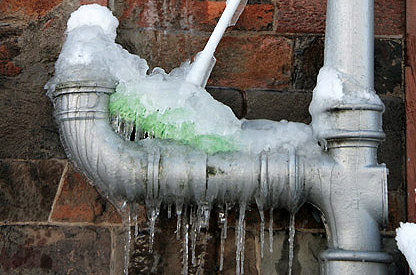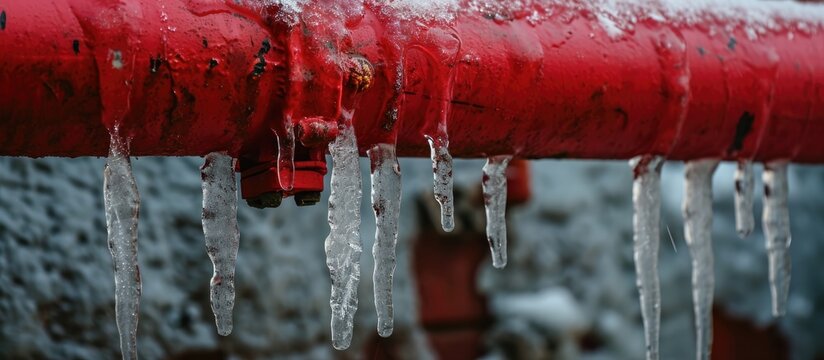Avoiding Frozen Plumbing in Winter: Expert Strategies
Avoiding Frozen Plumbing in Winter: Expert Strategies
Blog Article
What are your thoughts on Preventing and dealing with frozen pipes?

Winter can damage your plumbing, especially by freezing pipes. Below's how to avoid it from happening and what to do if it does.
Introduction
As temperature levels drop, the danger of icy pipes boosts, possibly resulting in expensive repairs and water damages. Recognizing how to avoid frozen pipelines is critical for property owners in chilly climates.
Comprehending Icy Pipelines
What triggers pipelines to ice up?
Pipes freeze when subjected to temperatures below 32 ° F (0 ° C) for extended periods. As water inside the pipelines ices up, it broadens, taxing the pipeline wall surfaces and potentially triggering them to burst.
Risks and problems
Icy pipes can lead to water supply disruptions, property damages, and costly repairs. Burst pipelines can flood homes and trigger substantial architectural damage.
Signs of Frozen Piping
Recognizing icy pipelines early can stop them from bursting.
Exactly how to recognize icy pipelines
Try to find reduced water flow from faucets, unusual smells or noises from pipes, and visible frost on subjected pipelines.
Avoidance Tips
Insulating prone pipes
Wrap pipes in insulation sleeves or utilize warmth tape to safeguard them from freezing temperatures. Focus on pipes in unheated or outside locations of the home.
Home heating methods
Keep interior areas properly heated up, specifically areas with pipes. Open up closet doors to permit warm air to circulate around pipelines under sinks.
Protecting Outdoor Plumbing
Garden tubes and outside faucets
Detach and drain garden pipes before winter. Set up frost-proof spigots or cover exterior taps with protected caps.
What to Do If Your Pipes Freeze
Immediate actions to take
If you presume icy pipelines, maintain taps open up to relieve stress as the ice thaws. Utilize a hairdryer or towels soaked in hot water to thaw pipelines gradually.
Long-Term Solutions
Structural adjustments
Think about rerouting pipes away from exterior wall surfaces or unheated areas. Include added insulation to attics, basements, and crawl spaces.
Upgrading insulation
Invest in top quality insulation for pipelines, attic rooms, and wall surfaces. Proper insulation aids keep regular temperatures and decreases the danger of frozen pipelines.
Conclusion
Stopping icy pipelines requires positive procedures and fast actions. By comprehending the reasons, signs, and preventive measures, house owners can shield their pipes during cold weather.
5 Ways to Prevent Frozen Pipes
Drain Outdoor Faucets and Disconnect Hoses
First, close the shut-off valve that controls the flow of water in the pipe to your outdoor faucet. Then, head outside to disconnect and drain your hose and open the outdoor faucet to allow the water to completely drain out of the line. Turn off the faucet when done. Finally, head back to the shut-off valve and drain the remaining water inside the pipe into a bucket or container. Additionally, if you have a home irrigation system, you should consider hiring an expert to clear the system of water each year.
Insulate Pipes
One of the best and most cost-effective methods for preventing frozen water pipes is to wrap your pipes with insulation. This is especially important for areas in your home that aren’t exposed to heat, such as an attic. We suggest using foam sleeves, which can typically be found at your local hardware store.
Keep Heat Running at 65
Your pipes are located inside your walls, and the temperature there is much colder than the rest of the house. To prevent your pipes from freezing, The Insurance Information Institute suggests that you keep your home heated to at least 65 degrees, even when traveling. You may want to invest in smart devices that can keep an eye on the temperature in your home while you’re away.
Leave Water Dripping
Moving water — even a small trickle — can prevent ice from forming inside your pipes. When freezing temps are imminent, start a drip of water from all faucets that serve exposed pipes. Leaving a few faucets running will also help relieve pressure inside the pipes and help prevent a rupture if the water inside freezes.
Open Cupboard Doors
Warm your kitchen and bathroom pipes by opening cupboards and vanities. You should also leave your interior doors ajar to help warm air circulate evenly throughout your home.

I am just very excited about 6 Ways to Prevent Frozen Pipes and I'm hoping you enjoyed my post. Be sure to pause to promote this blog post if you enjoyed it. We cherish your readership.
Book Appointment Report this page